The Italian magazine Art a Part of Cult(ure) has just published my review of Dario Carratta’s exhibition “Attività Alpha” alla Galleria 291 est, Roma
Read More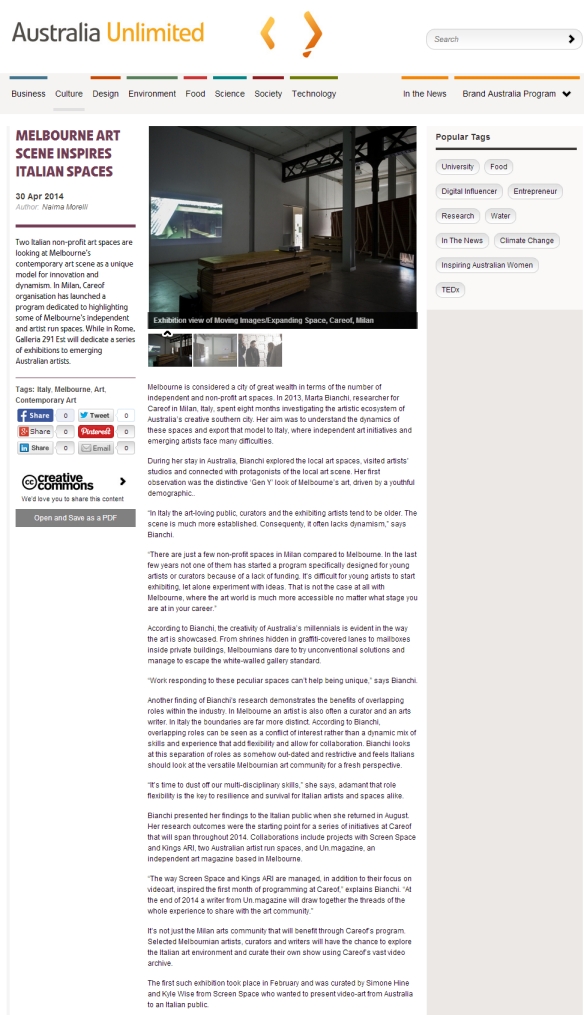
The web-magazine Australia Unlimited has just published my article about Italian non-profit art spaces looking at Melbourne’s contemporary art scene as a unique model for innovation and dynamism. The article is part of my reportage about emerging artists in Melbourne.
Read More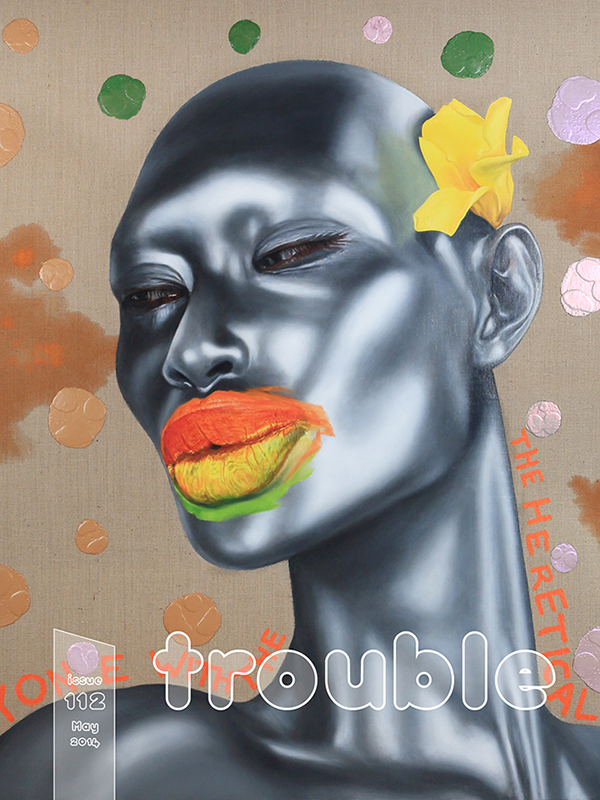
My interview with artist Ashley Bickerton “Artists are dyed poodles dancing through fiery hoops for the one percent”, is the cover story of the Australian magazine Trouble. (My second cover story on Trouble after Bindi Cole!)
The interview is part of my reportage about contemporary art in Indonesia.
Here the link to the interview
Here the link to the online version of the magazine
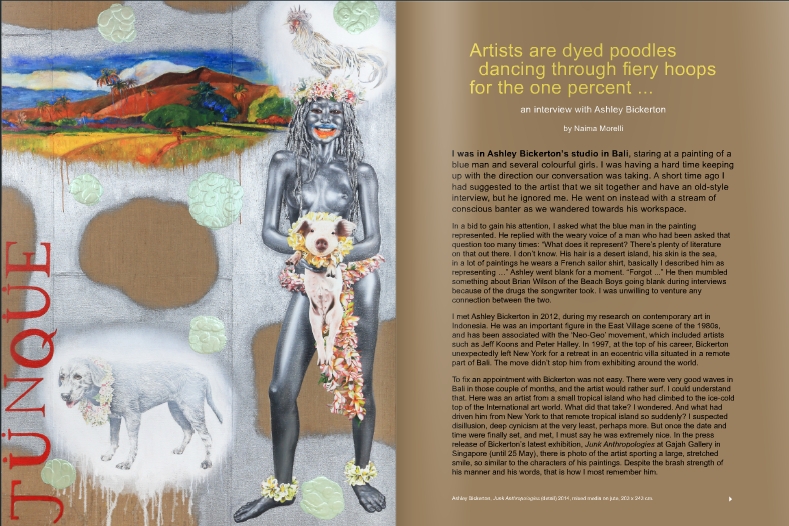
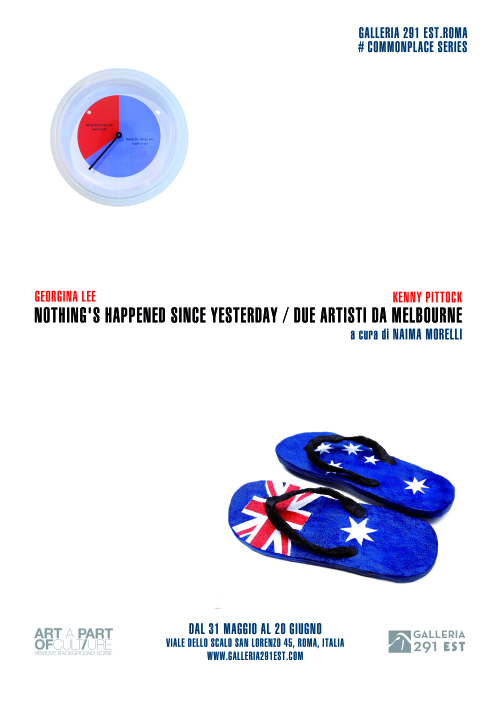
–
Il 31 maggio inagurerà alla Galleria 291 est a Roma la mostra dei due artisti australiani Kenny Pittock e Georgina Lee, con mia curatela. La mostra è parte della mia ricerca sugli artisti emergenti a Melbourne. Beccatevi il comunicato e una galleria di immagini:
Read More
It’s Easter holidays and instead of camping and picnicking in random green spots in Sorrento, as it’s tradition over here, I’m working on a new book.
This will be a narrative essay about the challenges of being a young artist. The setting is Melbourne, Australia, but the book will be a snapshot of a moment of an artist’s career all over the world.
This book has a lighter tone compared to my Indonesian one (which is now going through the editing process in case you were wondering). With the Indonesian book I had to tackle pretty serious themes, since the country’s history has been pretty turbulent; while younger artists are lured by an often misleading market, established artists have to come to terms with the country’s political and social issues. Years of colonialism, dictatorship and struggles have very deeply influenced the contemporary artists in Indonesia.
Australia didn’t have that on a superficial level. The tragedies concerning Indigenous Australians or the aggressive Australian policies towards migrants – to name just two – don’t really register as their own to young, mostly white, Australians.
The focus of my book will still be contemporary art in relation with its context, but this time I want to be more personal. How to get a living when you have always thought that everything you would have to do in life was art? I heard this question by many of my artist friends and I also asked it to myself more than once.
The Melbournian system and the Australian way have some answers, but they pose also some new challenges. In this book I will give my take on the problem through my experience and the 40 voices of people I’ve interviewed in Australia. I’m interested in showing the good sides of the ecosystem in Melbourne and explaining how that could be beneficial for an artist who is interested in having a career.
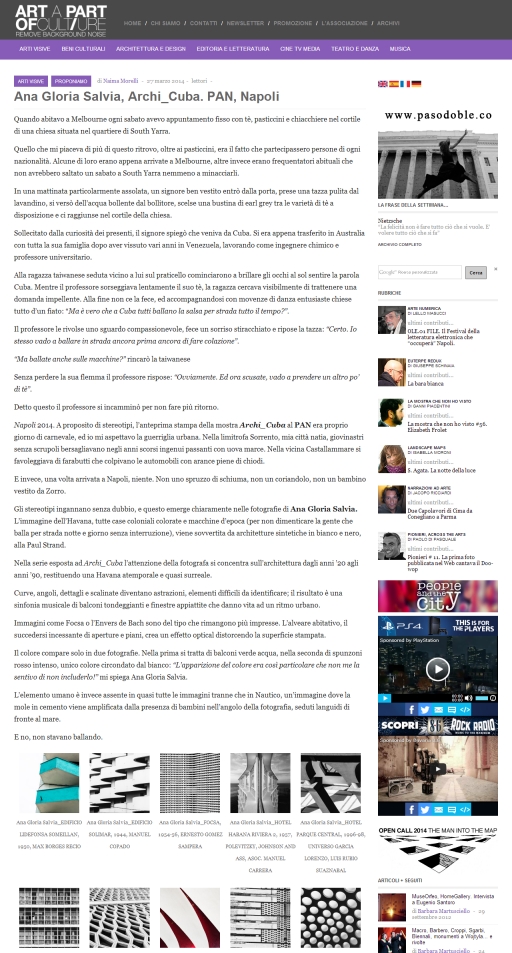
The Italian magazine Art a Part of Cult(ure) has just published my review of Ana Gloria Salvia’s exhibition “Archi_Cuba” at PAN, Naples
Read More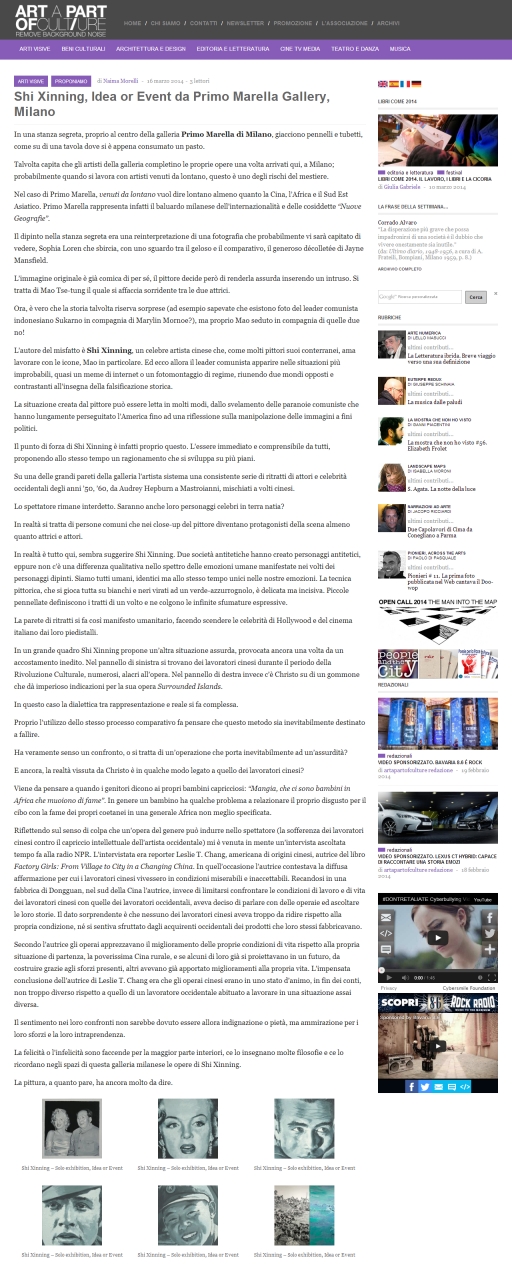
The Italian magazine Art a Part of Cult(ure) has just published my review of Shi Xinning’s exhibition “Idea or Event” at Primo Marella Gallery, Milan.
Read More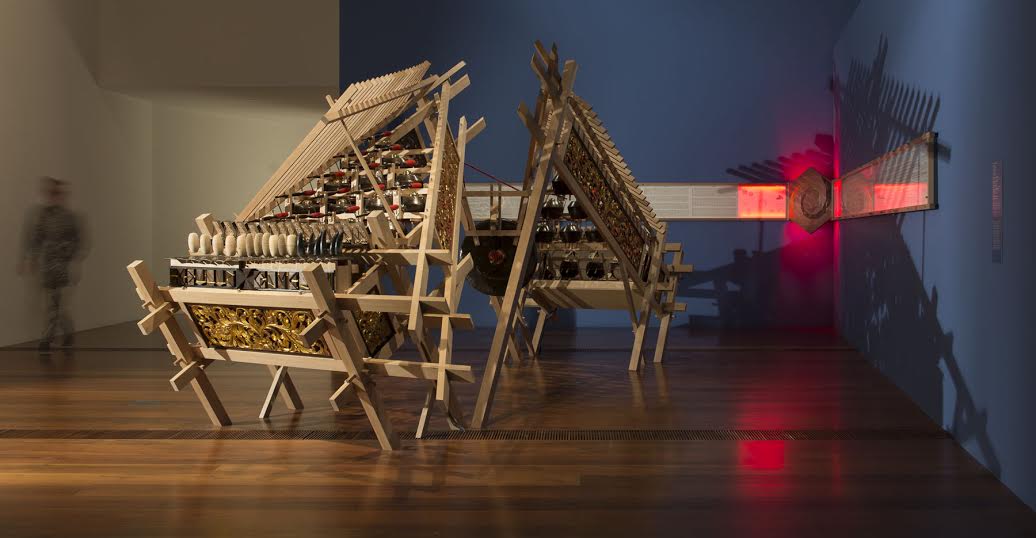
What the National Gallery of Victoria is trying to do with the Melbourne Now exhibition is to define the identity of Melbourne through its cultural practices, with a special focus on contemporary art.
I’m in Italy now, ironically writing my book about emerging artists in Melbourne, so I couldn’t visit the exhibition. Luckily my Australian friends and the artists that I have interviewed always keep me updated.
Some time ago I got a mail from artist Danius Kesminas, who told me about his new project with Slave Pianos for Melbourne Now, called Gamelan sisters (Sedulur gamelan). I posted some images, which gives you the feeling of this evocative machinery. On Slave Pianos’ website I find more information about it:
“Sedulur Gamelan (Gamelan Sisters) consists of two interlocking wooden structures that reconfigure elements of traditional Javanese architecture through the De Stijl philosophical principles of neoplasticism to create an abstraction of an 18th century double grand piano.
Read More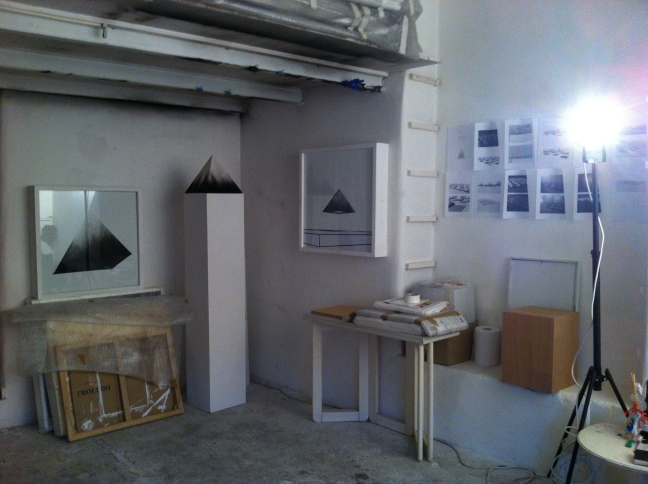
I recently visited the studio of artist Alessandro Cannistrà in San Lorenzo.
It consisted in a white, neat room, pretty bare, except for some books, stucked in an arch in the wall over the door, and a black sofa with some black hats on it.
“This is an original gaucho hat.” he said grabbing a wide-brimmed leather hat on top of the stack “I bought it in Argentina, during my artist residency in Buenos Aires”.
Alessandro has travelled quite a bit lately and he recently relocated in Rome. His work keep on travelling internationally through exhibition and fairs, that’s why his studio was almost empty at the moment.
My attention was attracted by some 3D reconstructions that were pinpointed on the wall.
“Is that what are you working on at the moment?” I asked
Alessandro explained me that he was working on these pyramids for his new solo exhibition at Toselli Gallery, in Milan, curated by Luca Tomìo. The title was “Oggetto di Pensiero”, namely “Object of thinking”, and will open on March 28.
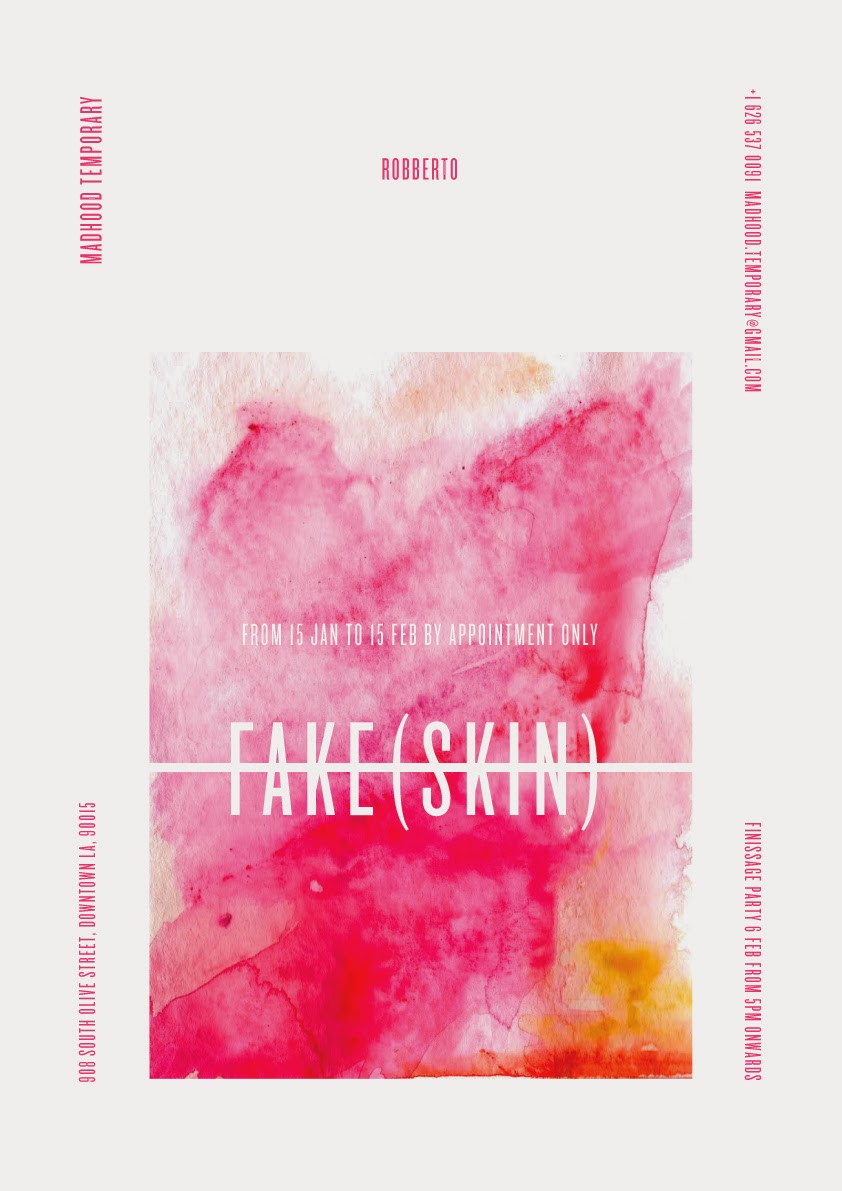
Robberto is a talented emerging Italian artist that I have been not only following but also collecting.
I recently wrote the text for his exhibition Fake (Skin), now on at Madhood Temporary in Los Angeles. I posted it below along with some pictures that Robberto sent me as a preview.
FAKE (SKIN)
For his first solo show in the United States, Robberto is presenting a new series of work realized during his stay in Los Angeles.
His research starts from a linguistic observation around the meaning of the word buck, that is used for call “dollars ”
The artist decided to go deeper into this duality and study the etymology of this expression, finding out that buck is the abbreviation of buckskin, a common medium of exchange in trading between the natives and the Europeans.
There are documents from 1748 saying “Every cask of Whiskey shall be sold to you [Indians] for 5 Bucks.” The transition from buckskin to dollars seems only natural.
This finding leads the artist to think about the perception of wildlife and nature in the city of Los Angeles.
He reached the conclusion that the nature in town, is just a fake perception of the real natural environment and that the trees, the water and the animals have just been pushed in 150 years, a really short time, to cohabit together with 20 millions of peoples, this created in him a feeling of displacement.
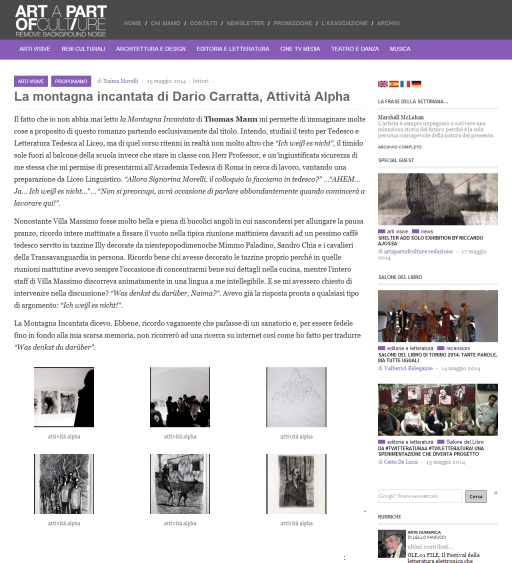
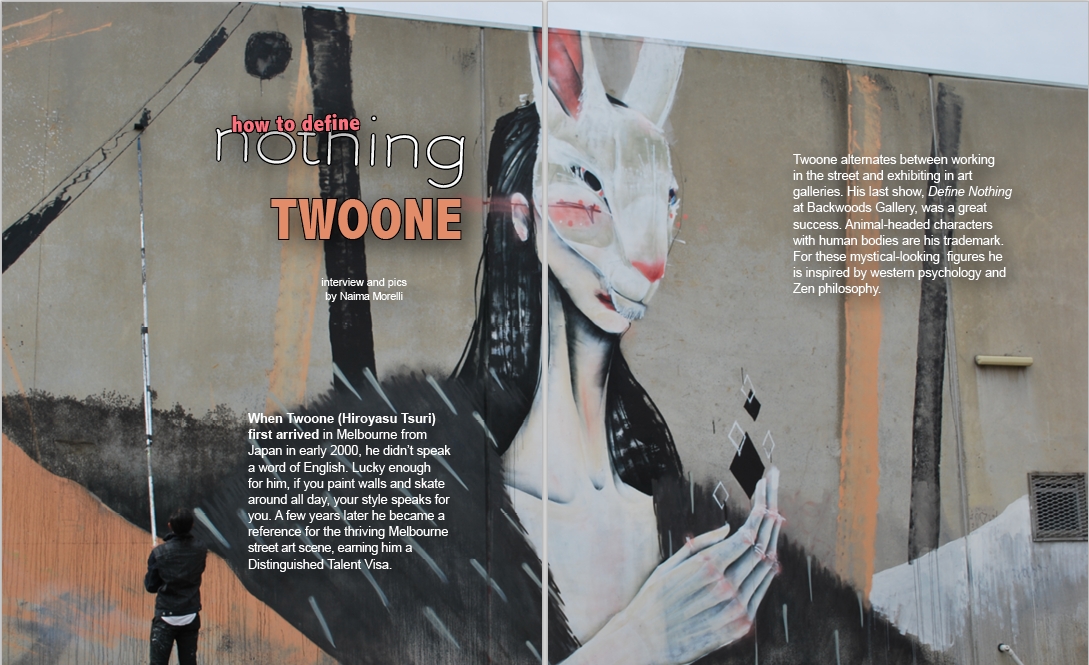




Published! Contemporary art and climate change on Global Comment
The web magazine Global Comment has just published my article “Is contemporary art effective in spreading awareness of climate change?”. It is my first collaboration with this magazine.
Here the link to the article
Read More